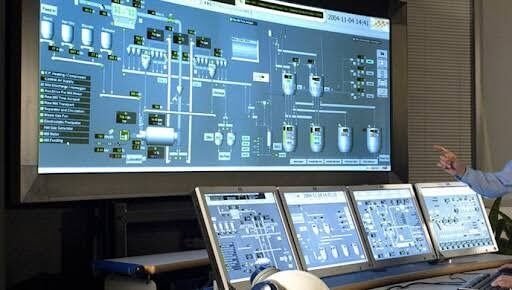Modern commercial buildings rely on building management system software that can orchestrate complex building operations with precision and intelligence. Today’s software has moved way beyond simple scheduling programs to become full blown operational command centers that use artificial intelligence, machine learning and advanced analytics.

Building management system software is the digital brain that processes thousands of data points every second, making split second decisions on energy consumption, occupant comfort and system reliability. These platforms are the culmination of decades of technological advancement in building automation and control systems.
The move from proprietary, closed loop systems to open, interoperable software platforms has changed the game. Modern software provides unprecedented flexibility, scalability and integration that allows facility managers to respond to changing operational requirements and emerging technologies.
Understanding BMS software architecture, functionality and implementation strategy is key for professionals managing complex commercial and industrial facilities in today’s competitive world.
Software Architecture and Core Components
Platform Architecture Design
Modern BMS software utilizes distributed architecture models that distribute processing capabilities across multiple nodes while maintaining centralized oversight and control. This approach enhances system reliability by eliminating single points of failure while providing the scalability needed for large, complex facilities.
Database management systems serve as the foundation for data storage, trending, and historical analysis. Contemporary platforms utilize both relational and time-series databases to optimize performance for different data types and access patterns.
Web-based interfaces have largely replaced traditional thick-client applications, providing universal access through standard web browsers while reducing IT overhead and simplifying system administration. These interfaces support responsive design principles that adapt to various screen sizes and devices.
Application programming interfaces (APIs) enable integration with third-party systems and custom applications, extending BMS capabilities beyond traditional building automation functions. RESTful APIs have become the standard for modern integrations due to their simplicity and widespread support.
Real-Time Processing Capabilities
Event-driven processing engines handle alarm conditions, schedule executions, and automated responses with millisecond precision. These engines process multiple concurrent events while maintaining system stability and ensuring critical functions receive appropriate priority.
Data acquisition engines continuously collect information from field devices, process sensor readings, and update control outputs based on programmed logic and operator commands. High-speed processing capabilities ensure responsive system operation even with thousands of connected devices.
Communication drivers handle protocol translation and device communication, abstracting hardware complexities from higher-level application functions. These drivers support multiple simultaneous protocols and provide error handling and recovery capabilities.
Trending and logging functions capture operational data for analysis, regulatory compliance, and performance optimization. Configurable data retention policies balance storage requirements with analytical needs while ensuring critical information remains accessible.
Advanced Software Features and Functionality
Intelligent Control Algorithms
Predictive control algorithms represent the cutting edge of building management system software capabilities. These algorithms utilize historical data, weather forecasts, and occupancy predictions to optimize building operations proactively rather than reactively.
Adaptive control strategies automatically adjust control parameters based on system performance and changing conditions. These algorithms learn from operational experience and continuously refine control strategies to improve efficiency and performance.
Model predictive control (MPC) techniques enable optimization across multiple variables and constraints simultaneously. These advanced algorithms consider equipment limitations, energy costs, and comfort requirements to determine optimal control strategies for complex scenarios.
Fuzzy logic implementations handle situations where precise mathematical models are impractical or impossible. These algorithms enable effective control of complex systems with non-linear characteristics or uncertain parameters.
Data Analytics and Reporting
Advanced analytics engines process operational data to identify trends, anomalies, and optimization opportunities that may not be apparent through traditional monitoring approaches. These engines utilize statistical analysis and machine learning techniques to extract actionable insights from large datasets.
Energy analytics capabilities provide detailed insights into consumption patterns, efficiency metrics, and cost allocation across different building systems and operational areas. These insights support data-driven decision-making and energy management strategies.
Fault detection and diagnostics (FDD) algorithms continuously monitor system performance and automatically identify equipment problems or inefficient operation. These capabilities reduce troubleshooting time and enable proactive maintenance strategies.
Custom reporting tools enable facility managers to create tailored reports that address specific operational requirements, regulatory compliance needs, or performance tracking objectives. Automated report generation and distribution reduce administrative overhead while ensuring stakeholders receive timely information.
Building Management System Installation Considerations
Software Deployment Strategies
Building management system installation involving software components requires careful planning to ensure optimal performance and reliability. Server infrastructure sizing must account for current requirements and future expansion needs while providing adequate redundancy and backup capabilities.
Network infrastructure assessment ensures adequate bandwidth and reliability for software communication requirements. Modern BMS software generates significant network traffic, particularly when supporting real-time graphics and video integration.
Virtualization strategies enable efficient resource utilization and simplified disaster recovery procedures. Virtual server environments provide flexibility for testing, staging, and production deployments while reducing hardware requirements.
Cloud deployment options offer scalability and reduced IT overhead but require careful consideration of security, latency, and connectivity requirements. Hybrid deployments that combine on-premises and cloud capabilities often provide optimal balance of performance and flexibility.

Integration Planning
Legacy system integration presents unique challenges that require specialized software tools and expertise. Modern BMS software platforms provide gateway capabilities that enable communication with older systems while providing upgrade paths to current technologies.
Third-party system integration planning ensures comprehensive building control capabilities while avoiding vendor lock-in situations. Open protocol support and standardized interfaces facilitate integration with specialized equipment and systems.
Data migration strategies ensure historical information remains accessible during system upgrades or replacements. Proper data migration preserves valuable operational insights while ensuring continuity of analytical capabilities.
Testing and commissioning procedures verify that software installations meet performance requirements and operational expectations. Comprehensive testing validates control sequences, integration functions, and user interface capabilities before system acceptance.
Building Management System Maintenance and Support
Preventive Maintenance Strategies
Building management system maintenance for software components involves regular updates, database optimization, and performance monitoring to ensure continued reliability and optimal performance. Software maintenance schedules should align with facility operational requirements to minimize disruption.
Database maintenance procedures include regular backup verification, index optimization, and data purging based on retention policies. Proper database maintenance ensures responsive system performance and protects against data loss.
Security patch management ensures software platforms remain protected against emerging cyber threats while maintaining operational stability. Patch testing procedures verify compatibility before production deployment.
User training programs ensure facility staff can effectively utilize software capabilities and respond appropriately to system alerts and changing conditions. Regular training updates address new features and evolving best practices.
Performance Optimization
System performance monitoring identifies bottlenecks and optimization opportunities that may develop over time as building operations evolve. Regular performance assessments ensure software platforms continue to meet operational requirements.
Query optimization techniques improve database performance and reduce response times for complex analytical operations. Proper indexing and query design significantly impact user experience and system efficiency.
Resource utilization monitoring ensures server infrastructure remains adequate for current and projected requirements. Proactive capacity planning prevents performance degradation and enables smooth scaling as needs grow.
Version control procedures track software configurations and enable rapid rollback if updates create operational problems. Proper change management ensures system stability while enabling continuous improvement.

Vendor Selection and Evaluation
Evaluating Building Management System Companies
Building management system companies offer varying levels of software sophistication, support capabilities, and industry expertise. Comprehensive evaluation criteria should address both technical capabilities and business factors that impact long-term success.
Software licensing models significantly impact total cost of ownership and operational flexibility. Understanding licensing terms, upgrade policies, and support requirements helps ensure sustainable long-term operations.
Technical support capabilities vary significantly among vendors and can dramatically impact operational success. Evaluation should consider response times, escalation procedures, and local support availability.
Training and certification programs indicate vendor commitment to user success and product expertise development. Comprehensive training options reduce implementation risks and improve operational outcomes.
Long-Term Partnership Considerations
The companies that build building management systems and show long-term investment in their products and customer support offer more protection of the investment and continuity of operation. Selection should be based on the financial stability and position of vendors on the market.
Product roadmap alignment keeps the chosen software platforms flexible to support the changing operation needs and the industry standards. Frequent updates of the product and its features reflect the development and responsiveness to the market.
Case studies and reference installations give information on the capabilities of the vendor and the satisfaction level of the customers. Interviewing current customers will provide good insights on the product and vendor support.
Regional expertise and local presence is especially valued when it comes to complicated installations or facilities within emerging markets. Vendors who have proper operations in the region can be more supportive and more responsive.
Return on Investment and Business Benefits
Quantifiable Performance Improvements
Energy cost reductions represent the most immediate and measurable benefits of sophisticated BMS software implementations. Typical installations achieve 15-25% energy savings compared to conventional control systems through optimized operation and improved equipment efficiency.
Operational cost reductions extend beyond energy savings to include reduced maintenance costs, extended equipment life, and improved staff productivity. These benefits often exceed energy savings in total financial impact.
Compliance automation reduces administrative overhead while ensuring consistent adherence to regulatory requirements and industry standards. Automated reporting and documentation capabilities significantly reduce manual effort requirements.
Space utilization optimization enables more effective use of existing facilities, potentially deferring or eliminating expansion requirements. Occupancy analytics and space optimization algorithms maximize facility value and operational efficiency.
Strategic Advantages
Enhanced operational visibility enables data-driven decision-making and strategic planning that would be impossible with traditional control systems. Real-time dashboards and analytical tools provide insights that support both tactical and strategic decisions.
Competitive advantages emerge from superior operational efficiency, enhanced occupant satisfaction, and reduced environmental impact. These factors become increasingly important in competitive commercial markets.
Risk mitigation capabilities include early fault detection, predictive maintenance, and automated emergency responses that reduce liability exposure and protect business continuity. These capabilities provide insurance value beyond direct operational benefits.
Future-proofing investments through scalable, interoperable software platforms protect against technological obsolescence while enabling adoption of emerging technologies as they become available.
Conclusion
Building management system software is getting smarter by the day, driven by new technologies and increasing demands for energy efficiency, sustainability and operational excellence. From simple control systems to full operational intelligence platforms that can optimise building performance like never before.
Success with BMS software requires careful selection of the right platform, proper installation and ongoing optimisation. The investment in the software pays off in reduced operating costs, improved occupant satisfaction and competitive advantage.
The future of building management software is in autonomous optimisation, predictive analytics and seamless integration with new technologies. Organisations that adopt these capabilities will be ahead of the game in the increasingly demanding operational landscape.
For over 75 years IET has been providing electrical engineering solutions across East Africa, we have established ourselves as the leading BMS implementation experts in Kenya, Uganda and Tanzania. Our deep understanding of regional operational challenges and access to the latest BMS software platforms means we can deliver solutions that exceed performance expectations and are long lasting. Partner with IET today and unlock the full potential of advanced building management software and transform your facility’s operational capabilities.

Leave a Reply